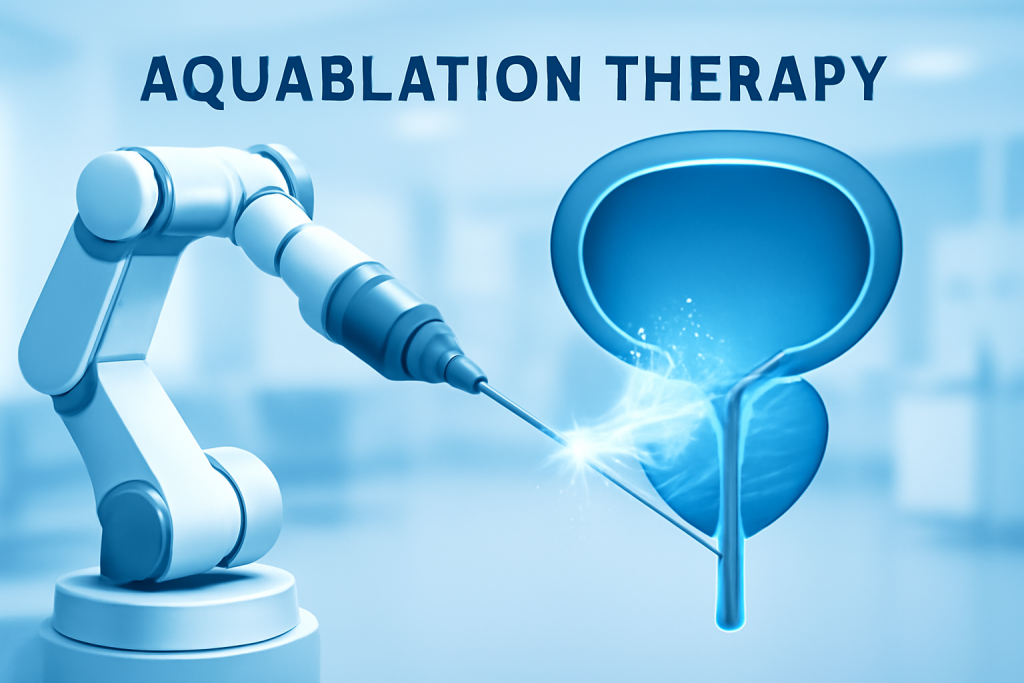Understanding Benign Prostatic Hyperplasia (BPH)
Overview of BPH
Benign Prostatic Hyperplasia (BPH) is a common condition affecting aging men, characterized by the non-cancerous enlargement of the prostate gland. This enlargement compresses the urethra, leading to urinary symptoms such as difficulty starting urination, weak stream, frequent urination, urgency, and nocturia (waking at night to urinate). BPH can significantly impact quality of life due to these bothersome lower urinary tract symptoms.
Traditional Treatments for BPH
Historically, treatment for BPH has ranged from conservative management with lifestyle changes and medications (alpha-blockers, 5-alpha-reductase inhibitors) to a variety of surgical options. The most established surgical treatment is Transurethral Resection of the Prostate (TURP), which involves physically removing prostate tissue to relieve obstruction. Other treatments include laser therapies (such as Holmium laser enucleation), microwave therapy, and prostatic artery embolization. While effective, these treatments carry risks of complications such as bleeding, erectile dysfunction, urinary incontinence, and longer recovery times.
What is Aquablation Therapy?
The Technology Behind Aquablation
Aquablation therapy is a breakthrough minimally invasive surgical technique for treating BPH, utilizing high-velocity water jets (robotically controlled) to precisely remove obstructive prostate tissue. The technology integrates real-time ultrasound imaging with robotic precision, allowing surgeons to tailor tissue removal based on individual prostate anatomy without thermal energy, which reduces collateral tissue damage.
How Aquablation Differs from Other Treatments
Unlike traditional surgical methods that rely on cutting or burning tissue, Aquablation uses a non-thermal, high-pressure water stream controlled by a robotic system for tissue ablation. This approach offers unparalleled precision and safety, minimizing damage to nearby structures responsible for sexual and urinary function. Additionally, its robot-assisted nature ensures repeatable and consistent results with reduced operator variability.

Benefits of Aquablation Therapy
Precise and Minimally Invasive
Aquablation allows for highly accurate removal of prostate tissue through a minimally invasive procedure performed transurethrally (through the urethra), eliminating the need for incisions. The robotic control combined with ultrasound visualization ensures targeting only the obstructive tissue while sparing surrounding healthy tissues.
Preservation of Sexual Function
One of the important advantages of Aquablation is its demonstrated ability to preserve sexual function, including erectile function and ejaculatory function, better than many traditional techniques. This is crucial for patients concerned about maintaining quality of life post-treatment.
Reduced Risk of Complications
Since Aquablation does not use heat, it reduces risks related to thermal injury such as strictures or tissue scarring, thereby lowering complications like urinary incontinence and urethral strictures that can follow TURP or laser treatments. The procedure also minimizes bleeding risks due to careful robotic control and irrigation.
Faster Recovery Times
Patients undergoing Aquablation generally experience quicker recovery with shorter catheterization times and hospital stays compared to conventional methods. This accelerated recuperation means less disruption in daily life and faster symptom relief.
The Aquablation Procedure
Pre-Procedure Preparation
Prior to Aquablation, patients typically undergo evaluation, including prostate imaging and urodynamic studies to assess prostate size, shape, and urinary flow. Temporary cessation of blood-thinning medications may be advised. Patients receive instructions regarding fasting and medication management on the day of the procedure.
Step-by-Step Procedure Guide
-
The procedure is performed under general or spinal anesthesia.
-
A robotic system equipped with an endoscopic camera and ultrasound probe is inserted transurethrally.
-
Real-time ultrasound mapping guides the surgeon and robotic system to plan the ablation area.
-
High-velocity water jets are deployed robotically to precisely remove obstructive prostate tissue per the programmed plan.
-
Continuous irrigation flushes out cystic debris and blood during the procedure.
-
A catheter is placed post-procedure to assist healing and urinary drainage.
Post-Procedure Care and Recovery
Following Aquablation, patients usually remain catheterized for 1 to 3 days to ensure urine flow and prostate healing. Most patients are discharged within 24 hours. Recovery includes avoiding heavy lifting and strenuous activities for a few weeks. Follow-up visits assess urinary function and healing progress.
Comparing Aquablation to Traditional Methods
Aquablation vs TURP
Aquablation matches TURP in symptom relief but offers benefits in precision, reduced bleeding, preservation of sexual function, and shorter recovery times. Unlike TURP’s thermal cutting, Aquablation’s water-based ablation minimizes tissue damage leading to fewer complications.
Aquablation vs Laser Therapies
Compared with laser therapies, Aquablation provides a non-thermal alternative, which reduces the risk of burning or scarring while delivering comparable improvements in urinary symptoms. Robotic control allows for more consistent and accurate tissue removal, potentially leading to enhanced safety and outcomes.
Clinical Research and Effectiveness
Key Findings from Recent Studies
Recent clinical trials have shown Aquablation to be effective in significantly reducing International Prostate Symptom Scores (IPSS) and improving urinary flow with durable results lasting beyond one year. Studies highlight low rates of incontinence and erectile dysfunction compared to standard procedures.
Long-Term Outcomes and Patient Satisfaction
Long-term follow-up studies report high patient satisfaction due to symptom relief and quality of life improvements. The minimally invasive nature and safety profile contribute to strong preference, especially among men desiring sexual function preservation.
Insurance and Cost Considerations
Insurance Coverage for Aquablation
Coverage for Aquablation therapy is expanding as evidence supporting its safety and efficacy grows. Many insurance providers classify it under advanced minimally invasive treatments for BPH, but coverage may vary by region and policy. Patients should confirm benefits with their insurer before treatment.
Cost Comparison with Other Treatments
While Aquablation may have higher upfront costs due to advanced technology and robotic equipment, the reduced hospitalization, faster recovery, and lower complication rates can offset overall expenses. Cost-effectiveness improves with broader adoption and growing procedural experience.
The Future of Aquablation Therapy
Innovations and Technological Advancements
Ongoing developments aim to enhance Aquablation precision, reduce procedure time, and integrate enhanced imaging techniques. Advances in robotic systems, software algorithms, and real-time feedback are expected to further optimize outcomes and expand procedural indications.
Expanding Access and Availability
As training programs grow and more urology centers adopt Aquablation technology, patient access is set to widen. Greater awareness among physicians and patients will drive demand for this cutting-edge therapy, shifting the standard of care for BPH treatment toward safer and more patient-friendly options.
Aquablation therapy stands at the forefront of transforming BPH treatment by combining robotic precision and groundbreaking waterjet technology. Its advantages of precision, safety, sexual function preservation, and rapid recovery herald a new era in urologic care, offering millions of men a superior option to reclaim their quality of life.















